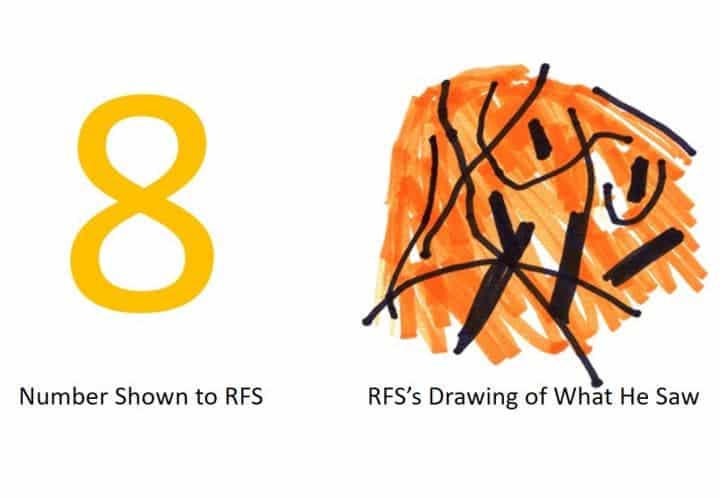We take awareness for granted, but just because something is right in front of us, that doesn’t mean that it is completely obvious to the brain. In fact, there are various neural processes that are involved in recognizing objects such as human faces or musical instruments. In a new study, researchers at Johns Hopkins University delved deeper into what underlies awareness in the brain after they studied the odd case of a patient with a rare brain disorder that prevents him from recognizing digits.

The patient, known as “RFS” in the study, has a degenerative brain disease that causes extensive atrophy in the cortex and basal ganglia. The damage to the brain cells led to some bizarre manifestations. Besides memory loss and muscle spasms, the patient cannot see the digits 2 through 9.
It’s not like the patient sees a blank. Instead, anything that looks those digits appears like random scribbles resembling “spaghetti”.
The patients’ vision is otherwise normal. He can recognize letters and others symbols — it’s just digits that are causing problems.
“When he looks at a digit, his brain has to ‘see’ that it is a digit before he can not see it — it’s a real paradox,” said Michael McCloskey, senior author of the new study and a cognitive scientist at Johns Hopkins. “In this paper what we did was to try to investigate what processing went on outside his awareness.”
McCloskey and colleagues devised a series of experiments that probed RFS’ awareness to see where and when it started to fumble. Although the patient can recognize human faces, when a picture of a face was embedded inside a number, both objects couldn’t be identified.
During this trial, the patient’s brain activity was scanned using electroencephalography (EEG). The procedure showed that although the face couldn’t be recognized, its presence was indeed detected by the brain. In fact, the brain waves were identical to the ones you’d expect in response to seeing a face clearly.
“These results show that RFS’s brain is performing complex processing in the absence of awareness,” said David Rothlein, a former Johns Hopkins graduate student who is now at the VA Boston Healthcare System. “His brain detected the faces in the digits without his having any awareness of them.”
In a second trial, the researchers embedded words inside numbers. Similar to the previous experiment, the patient’s brain registered the words, but something was still missing that kept the patient from actually being able to read the words. In another experiment, RFS couldn’t see a picture of a violin drawn onto a large digit. However, if the picture was far enough away from the number, the patient could see it clearly.
“He was completely unaware that a word was there, yet his brain was not only detecting the presence of a word, but identifying which particular word it was, such as ‘tuba’,” said co-first author Teresa Schubert, a former Johns Hopkins graduate student who is now at Harvard University.
These striking experiments show that visual awareness may require additional neural processing. Although complex processes are involved in detecting and identifying faces, words, and other symbols, these aren’t sufficient to create awareness.
The findings appeared in the Proceedings of National Academy of Sciences.









